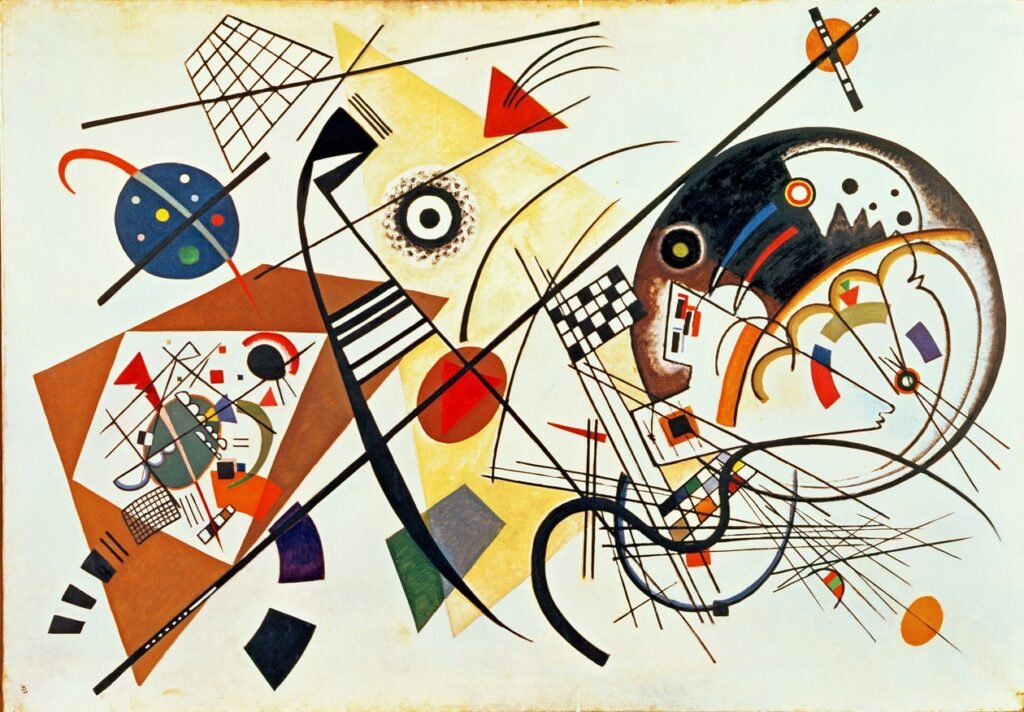When considered as narrative, art goes far beyond the common idea of simply telling a story. Rather than just reporting events, the artwork can be understood as a space for the sensitive inscription of experience—a way of making visible what usually remains unseen: emotions, tensions, intuitions, silences.
This is the perspective proposed by thinkers like Michel Henry, whose phenomenology of life offers a radically inward view of the artistic phenomenon. According to Henry, art does not represent the external world but reveals inner life and the deepest subjectivity. In this sense, the artwork does not communicate ideas but conveys lived intensity, immanent affection, and a vibration that precedes language.
This reading can be exemplified in the abstract paintings of Wassily Kandinsky. Through Henry’s lens, his works cease to be formal experiments and become manifestations of “invisible life.” The shapes and colors do not refer to worldly objects but to inner states that gain visibility on the canvas.

In this context, the narrative is neither linear nor explanatory—it becomes a felt experience that arises during contemplation. Each viewer creates their own affective path through the artwork. Instead of a predefined story, there is an open field of sensitive possibilities.
When Art Meets Error, Data, and Life
At the same time, contemporary art introduces an important shift to this discussion. The work On Love and Data, by Stephanie Dinkins, presents an urgent question: how can new technologies—especially artificial intelligence—integrate or fail to integrate into aesthetic sensitivity?
Rather than using AI as a tool of reproduction or control, Dinkins presents it as a character in the artistic process—a problematic interlocutor. By engaging in conversation with Bina48—one of the first AIs racialized as Black—the artist exposes the gap between lived experience and computed data.
Viewers, facing this awkward and fragmented dialogue, are not called to admire the technology, but to confront its flaws, silences, and limitations. Here, sensitivity arises precisely from friction.
This kind of work updates the notion of art as sensitivity and inscription. If Kandinsky made the invisible visible through color and form, Dinkins does so through algorithmic errors, missing data, and a refusal to fit Black and female experiences into statistical structures. In both cases, however, art remains a means of accessing a sensitive dimension that escapes conventional discourse.
The Artist’s Life as a Sensitive Inscription
Finally, the narrative surrounding the artist’s life—their trajectory, struggles, and context—also becomes a significant part of aesthetic value. Van Gogh and Pollock are classic examples of how biography becomes part of the artwork’s “reading device.”
Thus, the value of art lies not only in the object itself but in the constellation of experiences surrounding it: its public visibility, historical context, and above all, its power to affect.



